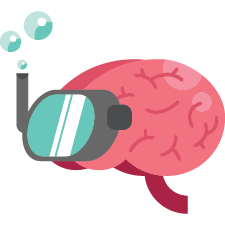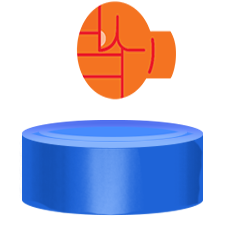Инсталирайте Steam
вход
|
език
Опростен китайски (简体中文)
Традиционен китайски (繁體中文)
Японски (日本語)
Корейски (한국어)
Тайландски (ไทย)
Чешки (Čeština)
Датски (Dansk)
Немски (Deutsch)
Английски (English)
Испански — Испания (Español — España)
Испански — Латинска Америка (Español — Latinoamérica)
Гръцки (Ελληνικά)
Френски (Français)
Италиански (Italiano)
Индонезийски (Bahasa Indonesia)
Унгарски (Magyar)
Холандски (Nederlands)
Норвежки (Norsk)
Полски (Polski)
Португалски (Português)
Бразилски португалски (Português — Brasil)
Румънски (Română)
Руски (Русский)
Финландски (Suomi)
Шведски (Svenska)
Турски (Türkçe)
Виетнамски (Tiếng Việt)
Украински (Українська)
Докладване на проблем с превода















I am a long time Linux endorser, though I won't say I'm an expert, been using it on and off since the Late 90's. And yes, gaming has been the larger reason why I haven't fully changed to it, but that is becoming less of an issue.
Currently playing Helldivers 2 in Kubuntu Linux.
To my humble understanding with past experience with WINE, Games on Linux, and Proton and Linux in general:
A comparison that may help: a random English speaking tourist going into a non-English speaking country, there's areas where the Hotels, Stores, Cafes do speak English and do business in US Dollars but when you go outside of that sphere the tourist can't communicate or operate at all cause no one speaks English. Further it's doubtful any business outside the tourist sphere will accept US Dollars for payment. The tourist ends up returning to the tourist trap sphere to do things again.
In this case the Windows Apps/Games are the tourists inside Linux.
Proton/WINE are an "application layer" that allows functions of Windows OS system operations within Linux so apps can run. It's not emulation though more like a translation, it's open sources coding that allows the software to run in a non-windows environment. Proton is the more game specific API. The API layer operates in a small simulated environment and doesn't leak into Linux. This does create a faux windows drive directory structure so the game can still place and find its config files, save files, registry keys, etc in this faux "C Drive" so the game functions normally.
Steam does this on a per-game basis so there's a small "compatdata" folder for each game run under Proton which contains these files.
As far as concerns about it leaking commands into OS: the Linux OS functions fundamentally different than Windows as it's Unix based. So if any code or command calls from something like GameGuard attempts to "leak" out of the WINE/Proton API layer the OS will reject it and/or the commands won't even function. Further Unix handles it's core/kernel security VERY differently than Windows so anything that would affect Windows kernel can't affect Linux/Unix kernel or core OS functions.
Now yes, WINE/Proton is code written in Linux to act as a translator for Windows but due to the security model of how Linux works, a translated app can not access Admin or greater permissions on the system. you CAN go through some hoops to do so (why would you?) but since the Windows app is issuing Windows commands those won't work in Linux since it's basically a different language. The Windows tourist is only allowed to wander and do business inside the tourist trap.
I ramble a bit but hope this description helps a little.
I think that I only needed to do more work because the file system that Microsoft uses NTFS doesn't work perfectly fine with Linux but it didn't took more than a few hours of try and error.
Sooner or later I'll do the full change but I think that I want to be sure that these kids of AC are harmless in Linux so I need to do more tests.
Get for your Steam Library enough space ready for a EXT4 Partition instead NTFS... its working much better with a Linux Gaming partition.
And its super easy to add another Steam Library, the Linux support is user friendly from Steam.
I know but since it was for testing I didn't wanted to buy a new drive for that. But yeah, not a big deal.
Today, my Steam Windows Gaming library gets smaller and smaller, while under Linux its growing... just like my middle finger to Microsoft :D
Also a big Warning, don't write as much as possible under Linux when your NTFS Partition is mounted... Read Only when possible. NTFS access is only simulated and in some situations you could run into data corruption.
Thanks for the warning, I only intended to try out how easy was to set up the LM and play games, seeing that it's easy and it works well I'm probably installing it definitely sooner than later.
And since most of my other programs are open source anyways I don't have to worry about them.
I bought 4 years ago a Samsung Portable SSD T5 which performance really good and i can't even see the difference between my Linux Laptop with has integrated M.2 Module.
In the early phase i switched regularly between Win7 and Linux which gave me a good feeling for a better transition, to find program's for Linux that replaced my program's under Windows.
Choosing a Desktop Environment (DE) is also a big decision, there are really beautiful DE's outthere and you can adjust them "MODDING" them, specially KDE has really good functions with Transparency Taskbar with Blur effects and there is a long list to archive your old/retro Win2k or Win7 navigation feeling.
Youtube could probably give you a quick peek.
Easy Modification even for unexperienced noobs (I never was running into a single bug on my Rolling Release from this Layouts):
https://www.youtube.com/watch?v=TJzfaqRLfpY
This looks more advance:
https://www.youtube.com/watch?v=KFr4tqk7Mvg
Budgie and Cinnamon DE's has probably also good layouts.
Yes, a Terminal Window is sometimes needed for Linux and is a mighty tool, but you can reduce it to a minimum and alot functions are there as a simple User Interface (UI).
To choose a Distro is another Story, it depends on the Hardware and Packages that are available. The support for Official Reposition/Flatpak/AppImage/AUR or Snaps (While Snaps the last recommend Package installer is and forced for Ubuntu Users, as far as i know).
Some Distro's just give more freedom then others, while Mint is good for unexperienced users and mainly for people who just want to quick running their games and browse and don't care about adjustments... it also has its limitations.
Right now I'm fine with mint, I prefer something easy to start with.
Because my Windows wont boot if I turn it off and I have no desire to go in to the bios each and every time to switch on/off the secure boot.
Installed Ubuntu. Works great so far. But I am figuring out how to install Nvidia Optimus so I can switch between the iGPU (intel Iris Xe) and dGPU (RTX3070Ti) better/more easy/automatically.
Rufus created Win11 Bootstick still allow disable TPM/Secure Boot.
Can't take long till Microsoft forced them to activate it with the next big Win11 Update.
Are you aware that Microsoft can collect and send all your local Passwords to the USA and could denie your Boot option and denie your access when you have encryption drive like BitLocker... and you can expect, even if they don't do it intentional.
It could happend by mistake and mistakes happends from Microsoft developers all the time... take Microsoft Azure Server Admin Keys as example, which was shown in public for several years... the story is just 1-2 years old, how incompetent this guys are.
I would thinking twice before i would using TPM/Secure Boot... strange that germany was the only country which voted against TPM2.0... who likes hardware dongles? besides the big company which gain additional access above your Hardware when you enable this devices.
Intresting that EA try with the last FIFA Game to implement TPM stuff. But who cares, right? Accept everything as long it is new technology... otherwise you got a branding that you living under a rock.
I have the i7-12700H, under win10, the thread scheduler is not optimized (MS can easily fix that, but they wont, out of spite so people need to get Win11.)
So another reason... But since I have the Steamdeck, Ive seen how Linux is heading in a proper direction for work, privacy and gaming. It just takes a bit of getting used to and a lot of manual setup.
Fun Fact, with deactivated E-Cores you can UnderVolt this Ultra Hot CPU even better and you will see the difference in your Temps and Powerdraw.
How'd you fix the white border? (if you did) I dont get any black screen issues just a small white line at the edges of my screen while playing which isnt the end of the world. I get some frame drops and audio issues here and there but not too much to be a big deal. All in all I thought the process of booting Linux on an external SSD was pretty smooth and not the huge headache I was expecting.